North Korea: A Hermit Country from Above (Photos)
Dark and Light
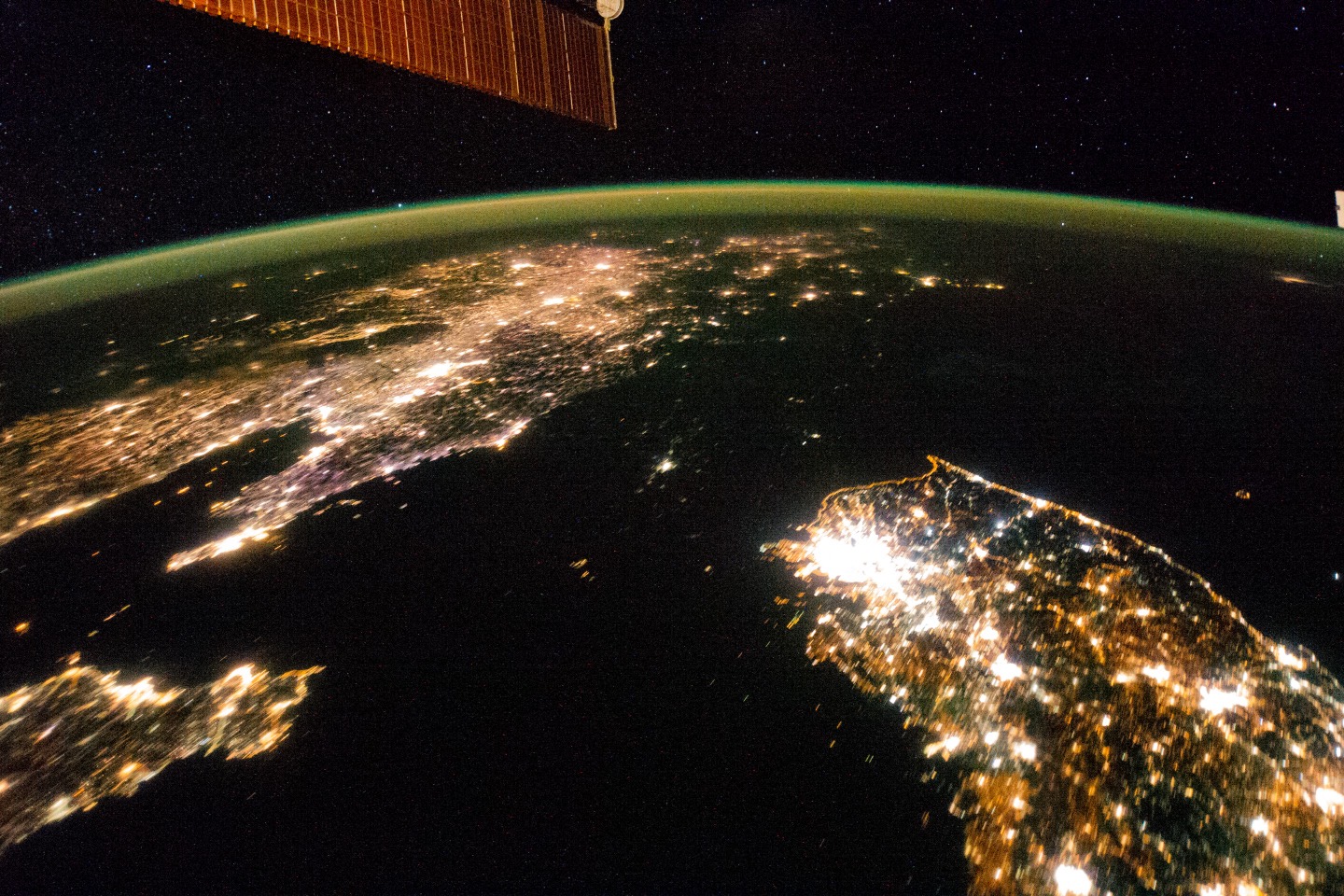
If any image can tell the story of North and South Korea in one frame, it's this shot taken by an astronaut aboard the International Space Station in January 2014. The nighttime view shows South Korea lit up with electric lights. Seoul is so bright as to be nearly washed out. With a 2017 gross domestic product estimated at $1.4 trillion by the International Monetary Fund, South Korea is among the dozen most prosperous countries in the world. North Korea's GDP is estimated at around $25 billion. According to one 2016 estimate, the per-capita GDP of North Korea was $1,013 in 2015, lagging behind even undeveloped countries like Myanmar and Bangladesh.
Mythological Mountain
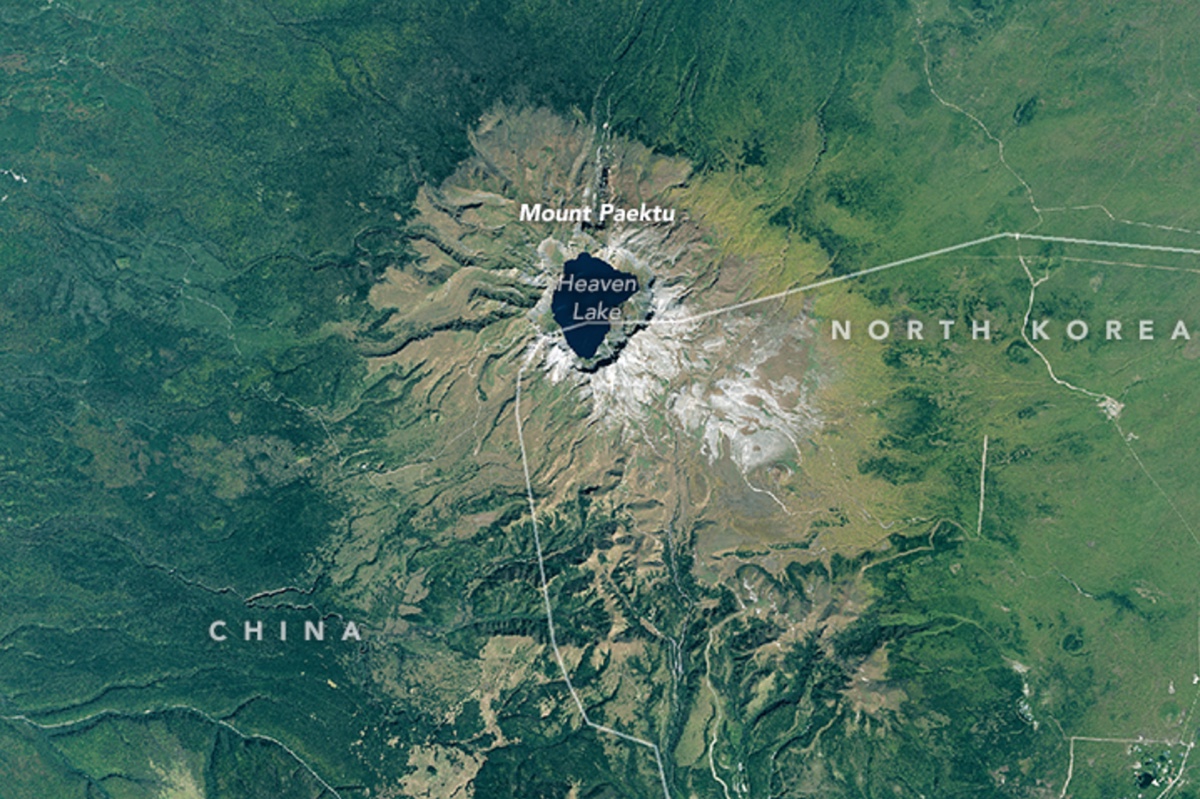
This volcano on the border of China and North Korea is Paektu, or Baekdu, Mountain. It has long been a sacred place in Korean mythology and was said to be the birthplace of Dangun, the founder of the first Korean kingdom. North Korea's Kim dynasty has seized on this mythology and claims that Kim Jong Il, the country's supreme leader between 1994 and 2011, was born there under a newly formed star. (According to Soviet records, Kim Jong Il was actually born in the former Soviet Union.)
Empty country
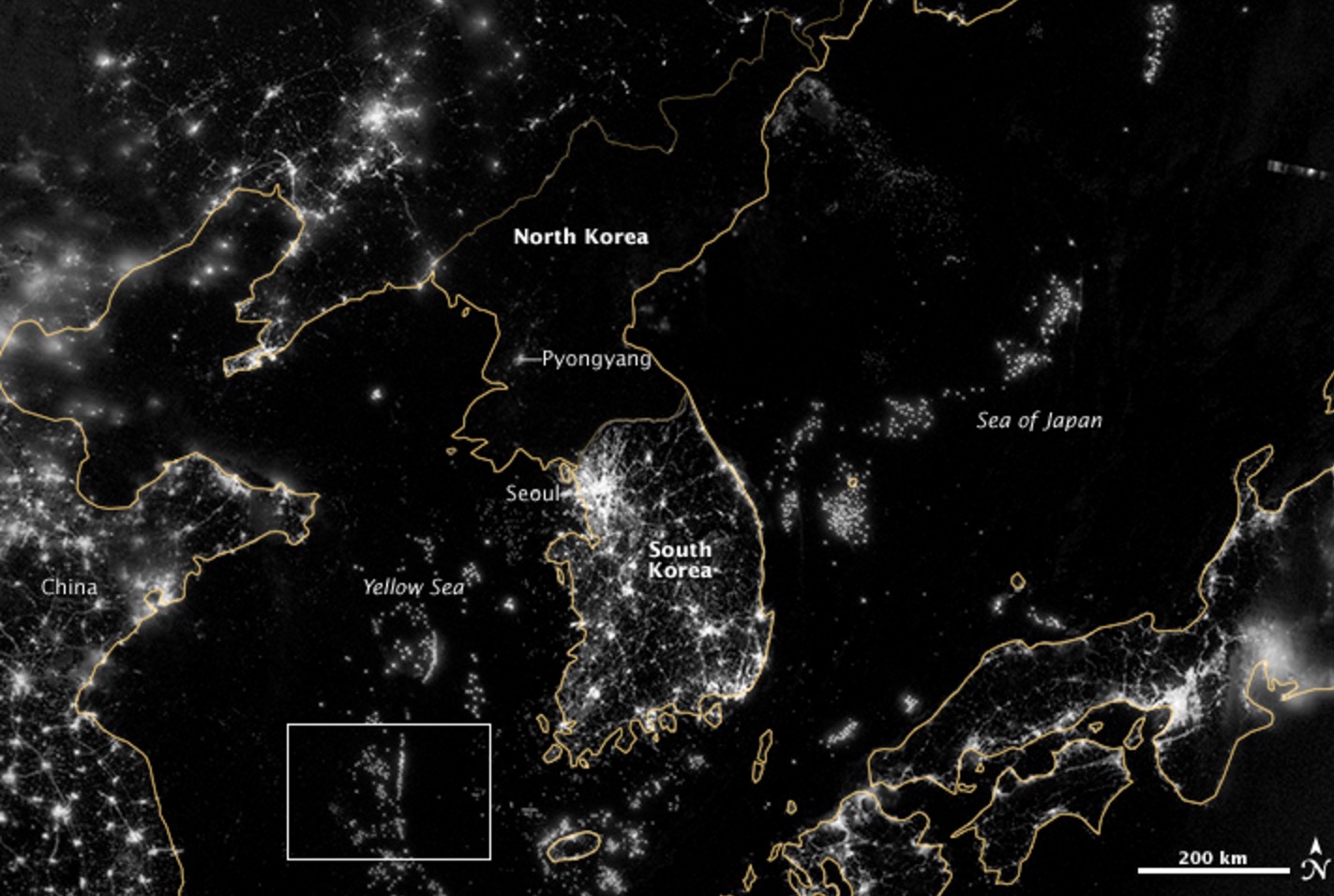
This 2012 image shows another stark nighttime view of North Korea and its more prosperous southern neighbor. In 1953, when the armistice ending the Korean War was signed, North and South Korea had similar levels of economic development. While South Korea has since nurtured high-tech industries and economic growth, North Korea has faced "chronic economic problems" under the repressive Kim dynasty, according to the CIA World Factbook. A widespread famine in the 1990s, exacerbated by the Kim policy of "self reliance" and the closed economy that prevented food imports, killed between half a million and up to 3 million people, according to different estimates.
Agricultural Fires
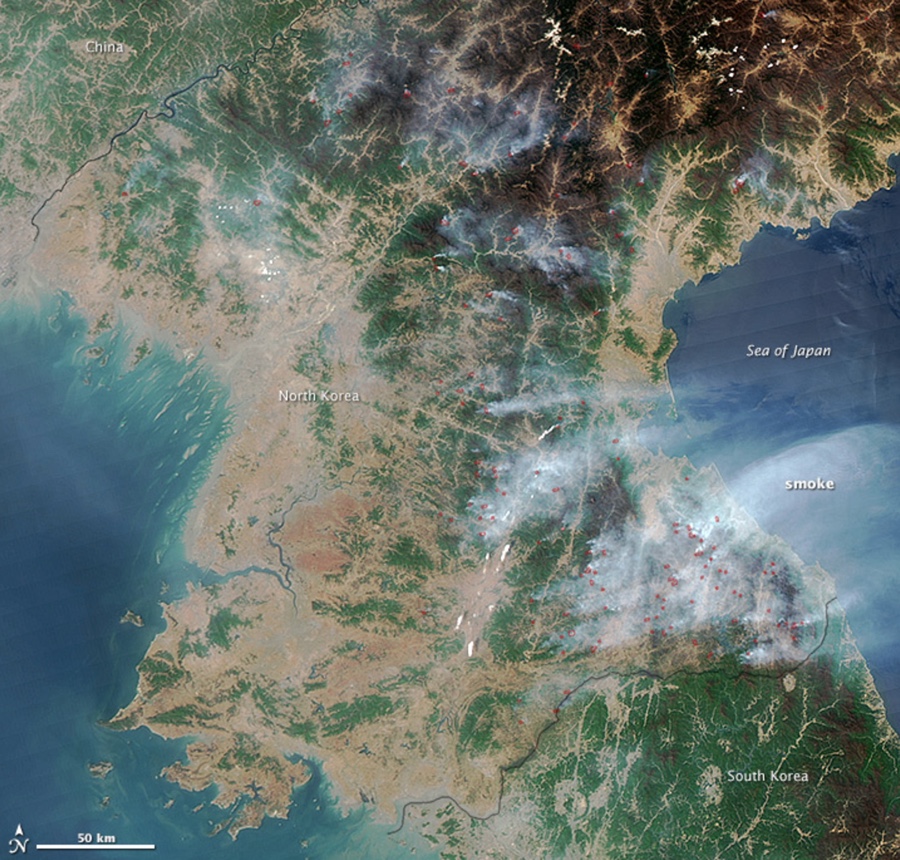
An image taken by the Moderate Resolution Imaging Spectroradiometer (MODIS) on NASA's Aqua satellite in April 2014 shows pinpricks of fire across North Korea. Some may have been wildfires, according to NASA's Earth Observatory. Others, particularly those near rivers, were probably agricultural fires, set by farmers growing crops in mountainous, marginal land.
Engorged river
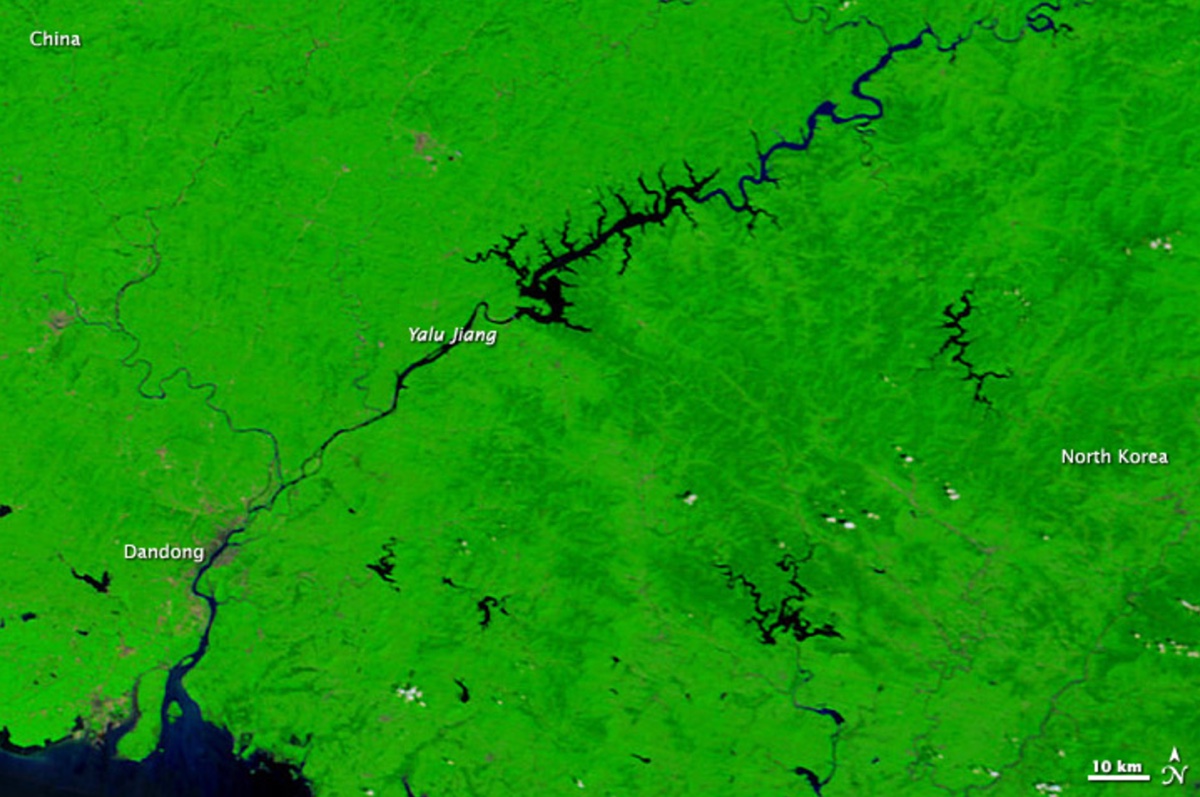
The Yalu, or Amnok, River runs for 490 miles (790 kilometers) along the border of North Korea and China. This image, taken by the MODIS instrument aboard NASA's Terra satellite, shows the river in August 2010, after weeks of rain swelled waterways and caused flooding and mudslides.
Baekdu in winter
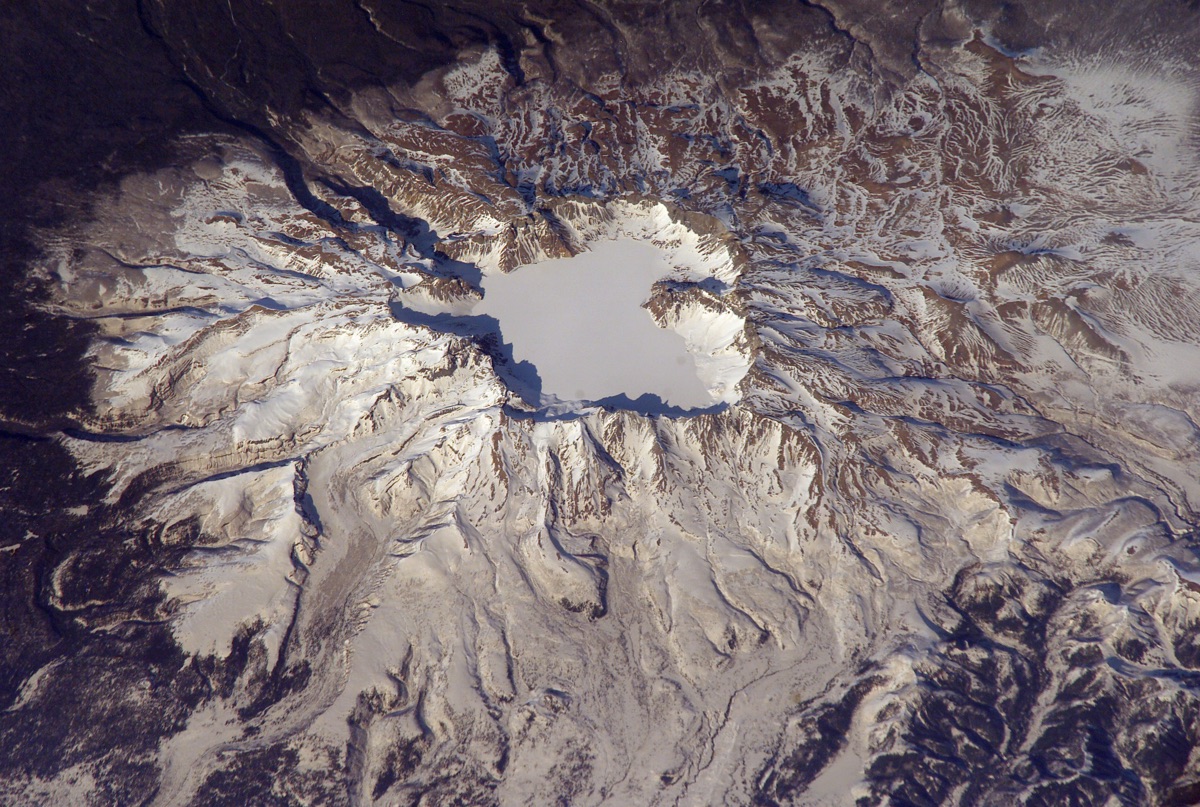
A gorgeous view of Mount Baekdu and its crater lake, Heaven Lake. In Chinese, the peak is called Changbaishan (translates to "ever-white mountain"), a name that seems appropriate for this image captured on April 4, 2003. Mount Baekdu last erupted in 1903. In around A.D. 946, the mountain exploded in one of the largest-known volcanic eruptions in human history, according to the Smithsonian Institution's Global Volcanism Program, depositing rock fragments as far away as northern Japan.
Fire scars
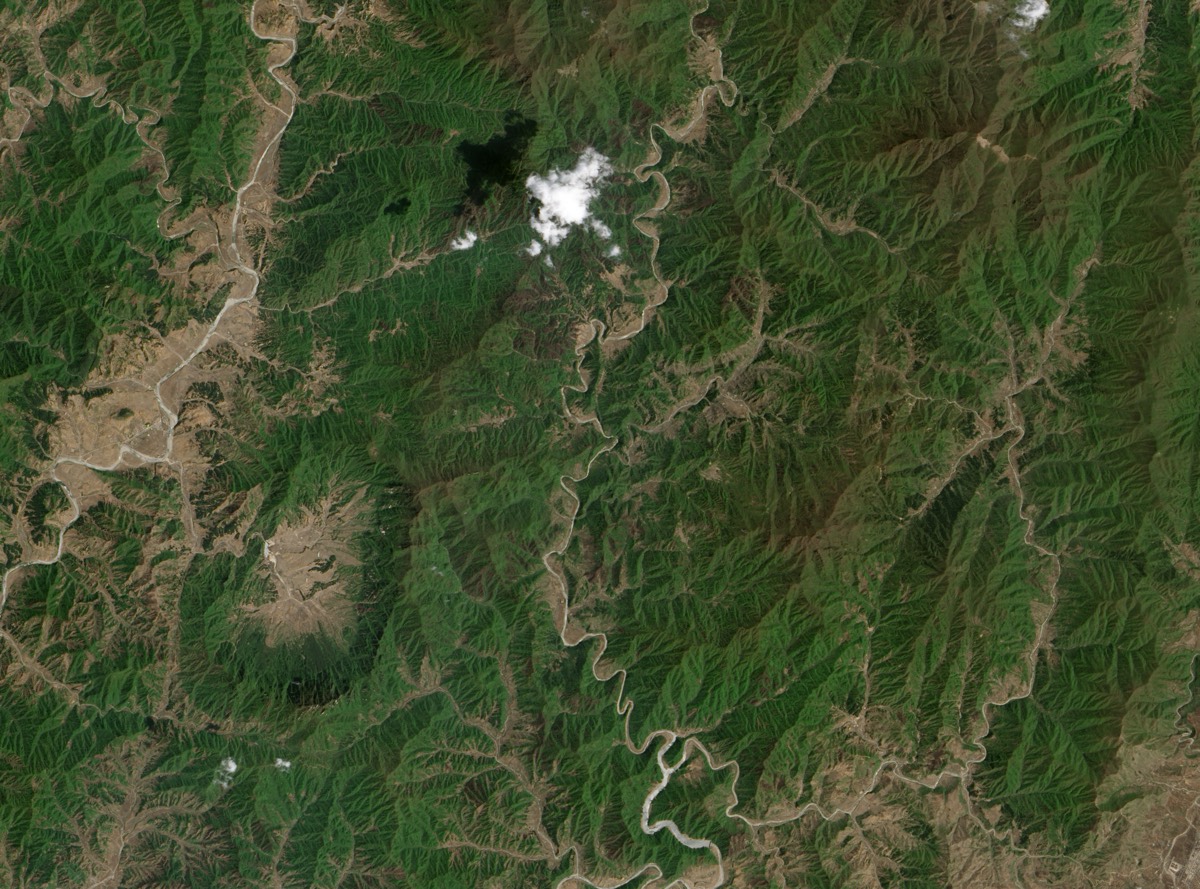
This 2014 image from NASA's Advanced Land Imager on its Earth Observing-1 satellite gives a sense of North Korea's rugged terrain as well as its agricultural practices. Burn scars seen near the river running down the center of the image are probably agricultural burns, according to NASA's Earth Observatory. Farmers struggling to grow food in poor, mountainous land focus their efforts alongside river valleys and burn away debris from the previous year at planting time.
Monster storm
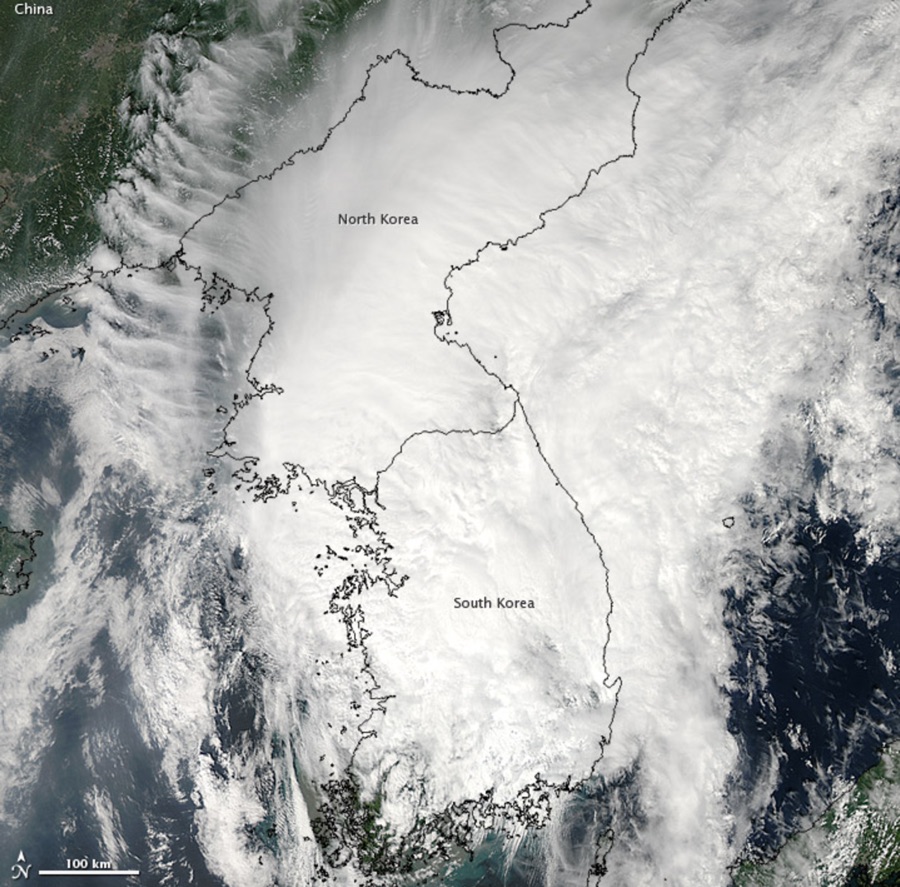
Tropical Storm Tembin blankets the entire Korean peninsula in this true-color image taken on Aug. 30, 2012, by the MODIS instrument on the Aqua satellite. The storm hit just days after another storm, Typhoon Bolaven, made landfall. Prior to hitting the Korean peninsula, Tembin had hit Taiwan twice — first on Aug. 23 and then after looping back again on Aug. 27.
Hazy day
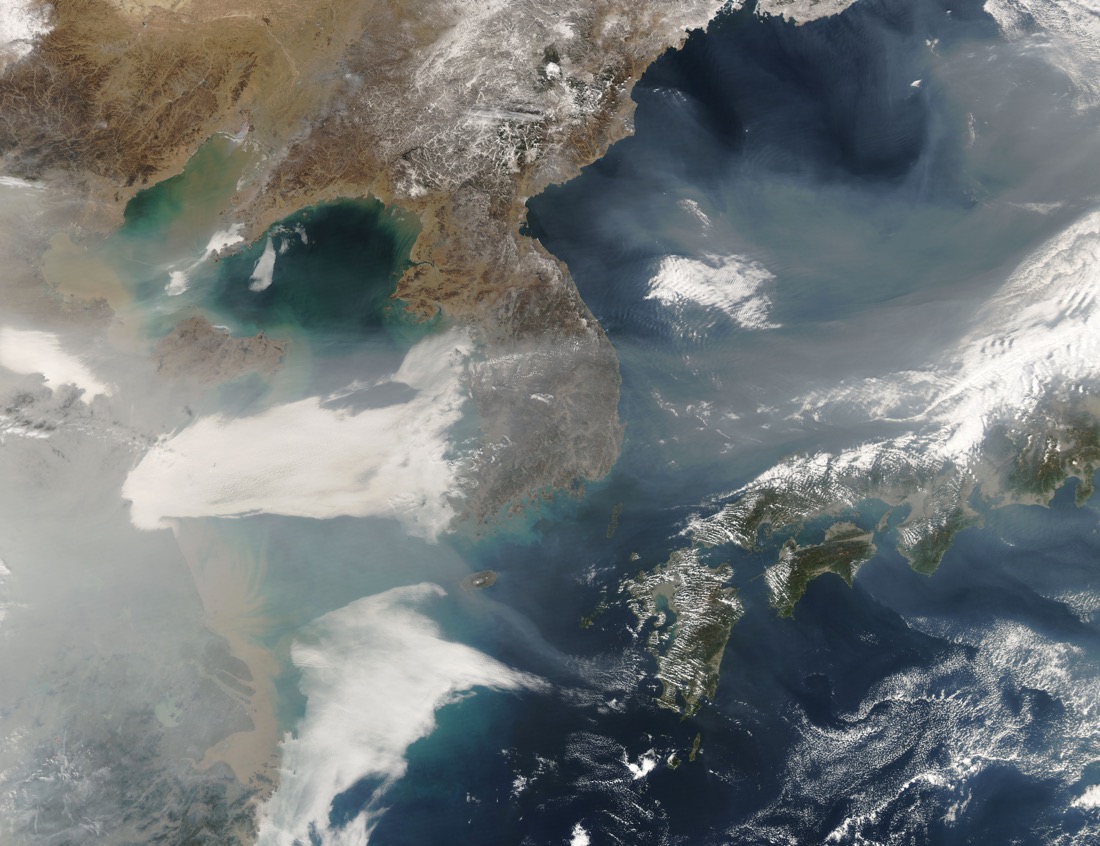
A hazy day in South Korea is clear in the North. This image from Feb. 6, 2007, was taken by NASA's MODIS instrument on the Aqua satellite. The haze emanates from China, which has struggled with air pollution issues as its population becomes more car-dependent.
No man's land
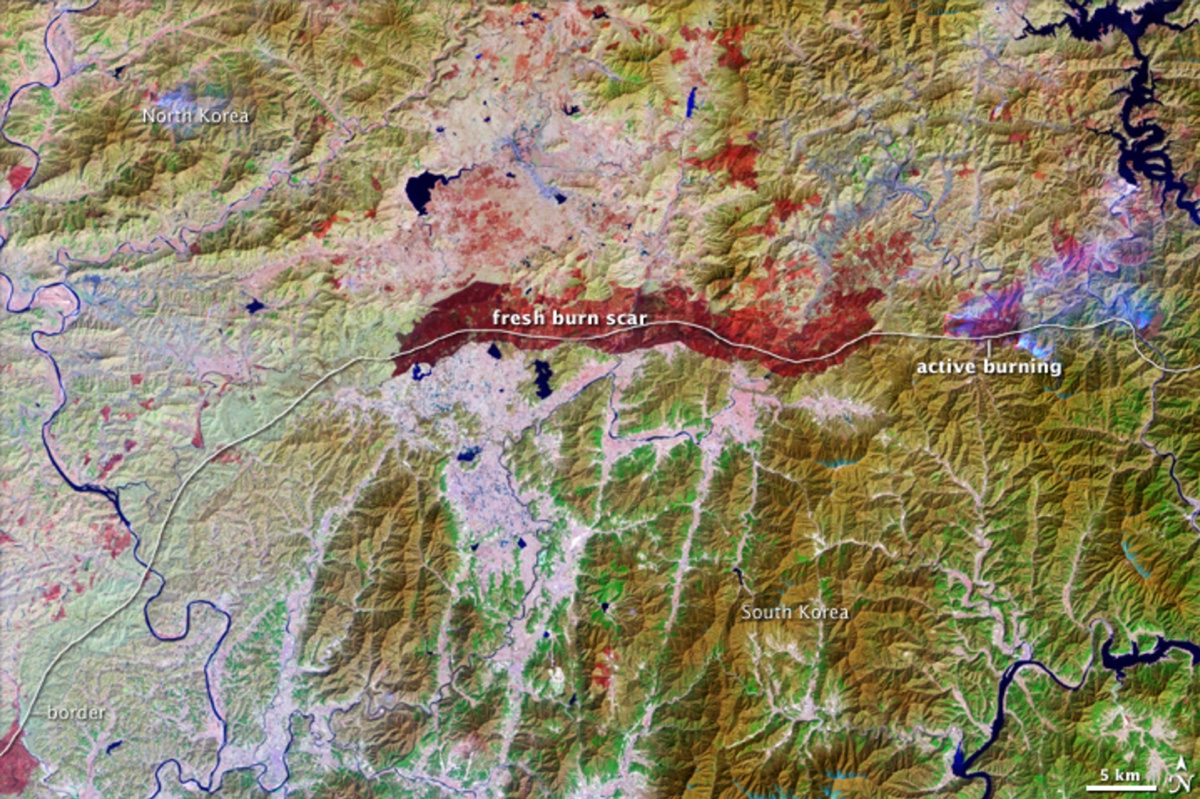
This false-color image shows the Korean Demilitarized Zone, a buffer between South and North Korea that was established in 1953 as part of the armistice that suspended the Korean War. Troops are stationed along both sides of this border, and burn scars in this image show some of the changes that both militaries have wrought on the DMZ in the context of patrolling and surveillance, according to NASA's Earth Observatory.
This image comes courtesy of the Enhanced Thematic Mapper Plus sensor on NASA's Landsat-7 satellite.
Line of truce
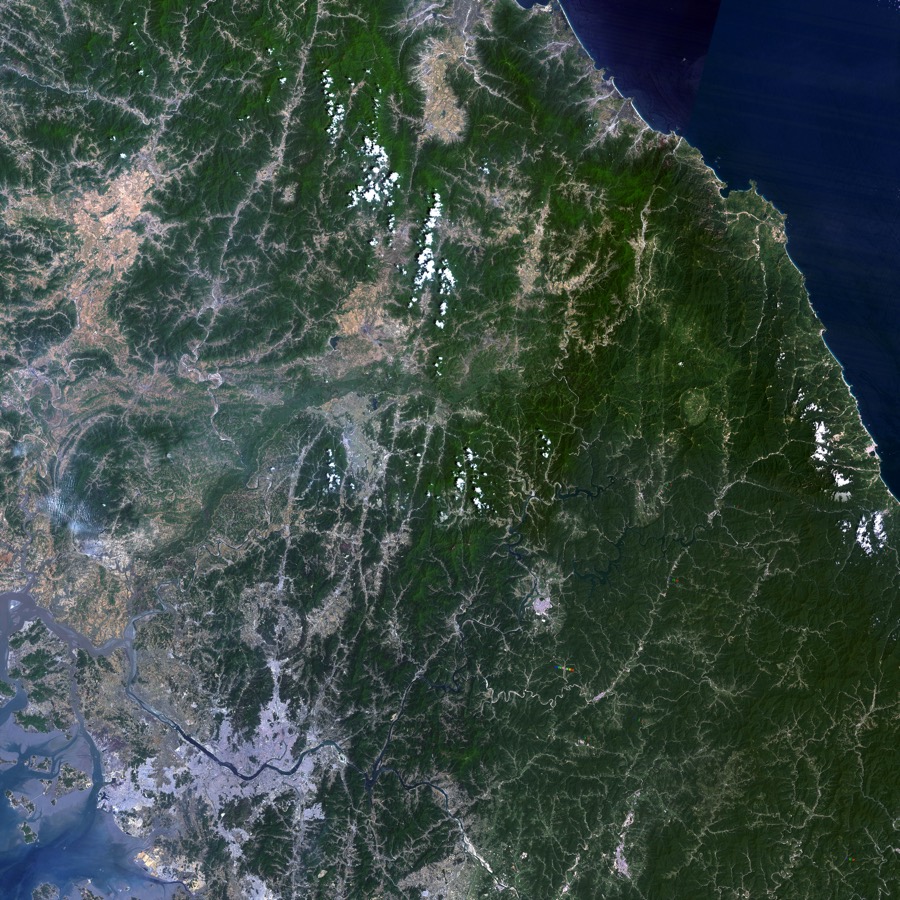
Another view of the Korean Demilitarized Zone (DMZ) in real color. The 2.5-mile-wide (4 kilometers) buffer is a mixture of mountains to the east and grasslands to the west. This image combines Landsat-4 and Landsat-5 satellite data from between 1989 and 1991 to get a cloud-free view of this largely depopulated swatch of land.
Sign up for the Live Science daily newsletter now
Get the world’s most fascinating discoveries delivered straight to your inbox.

Stephanie Pappas is a contributing writer for Live Science, covering topics ranging from geoscience to archaeology to the human brain and behavior. She was previously a senior writer for Live Science but is now a freelancer based in Denver, Colorado, and regularly contributes to Scientific American and The Monitor, the monthly magazine of the American Psychological Association. Stephanie received a bachelor's degree in psychology from the University of South Carolina and a graduate certificate in science communication from the University of California, Santa Cruz.










